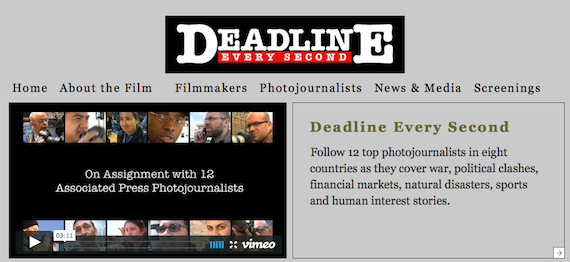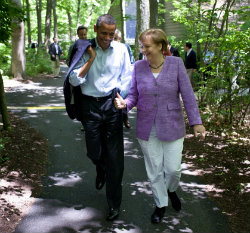Close Reading: Visual Literacy through Photography

In the introduction to this series on close reading and media literacy, I made a reference to how media has become something our students are never without: their cell phone or e-tablets are their constant companions, both inside and outside classrooms.
A recent Pew research study found that 83% of teens now capture still and moving pictures with their phones–no doubt sharing the results via email and social media.

But while many understand how to operate these so-called “smart phones,” they don’t always receive instruction in the rules of photography or visual literacy. And here is where public education, and media literacy, can and should take a role.
The new Common Core teaching standards, endorsed by a majority of states, now make many references to understanding illustrations, but mostly in the elementary grades: these references all but disappear in secondary schools.
I have become a strong advocate for using images (from the news and magazines) as jumping off points to both engage our students and meet those Common core standards.
In this space, (Teaching Visual & Media Literacy With Magazines, 9/24/13), I previously wrote about how I use magazines featuring pop culture celebrities and athletes to teach critical thinking, informational texts, and visual and media literacy.
Now, I’d like to elaborate on how a specific photo from the news (e.g. newspaper, magazine, TV, or online source) can be used to jump-start critical thinking and viewing.
I was reminded of the power of news photography recently while screening a new documentary, Deadline Every Second, which follows 12 photojournalists on assignment for the Associated Press. Author and producer Ken Kobré takes the viewer into the rarely-seen world of the photojournalist, whose job is not only to capture some person or event, but also to transmit that image (often on deadline) back to the home office where it is then sent on to thousands of AP members (newspapers, magazines, websites) and seen by millions of us around the world.
I wrote a chapter on this kind of visual literacy in my most recent book: Media Literacy In The K-12 Classroom (ISTE, 2012). As an example, here is an image from the news: I have deliberately removed the caption, (a strategy I suggest teachers considering doing) thus causing the audience to look closely at the photograph and to make some inferences based only on what they see.
(Source: Associated Press Photo by Susan Walsh, October 5, 2009)
The first question I pose to my audience is: “what do you see?” And the answers I usually receive are: President Obama and doctors.
I follow up with the question: What makes you believe they are doctors? And most everyone agrees: the white lab coats (with their names on them) indicate they are physicians. That leads me to ask: were you at the White House the day the President stepped out into the Rose Garden to speak? Well, of course not. Yet, we depend on the photojournalists in our world to be our eyes and ears at events which are then documented and transmitted to us via the news. It is up to us and our students (consumers of news) to apply some critical thinking and viewing to what we see.
My research revealed that the White House invitation to the physicians (they were, indeed, doctors) that day requested that they wear their white coats; but the day after the event, a New York newspaper published a photo of a White House staffer handing a white coat to a doctor who neglected to bring one. So, in essence, we have the White House manipulating or choreographing a news event for the cameras. (That’s nothing new.) And what was the White House hoping to communicate to us? That doctors support the Affordable Care Act, when in fact, not all doctors do.
Extra credit: Can students find out why this friendly photo of President Obama and Chancellor Angela Merkel of Germany from the G8’s 2012 meeting would be less likely to be snapped nowadays?
(Official White House Photo by Pete Souza)
So a photo from the news becomes a catalyst for teachers to involve their students in both reading the image, conducting a close read, looking for clues, citing evidence and considering how the image was used and for what purposes. This is visual/media literacy.
Ideas for taking the health care photo further: Teachers could have students read the official White House transcript for the event and write a caption, create a tweet, or write a script in which they summarize it in 20 seconds as if they were the correspondent for a national radio broadcast.
If we want our students to develop a stronger visual literacy, we must expose them to images in their world, help them understand how the media gathers and distributes visual “news”, and challenge them to think critically about what is being communicated and why.
In Part Three of this series on close reading & media literacy, we look at advertisements and commercials, a huge part of our students’ world and culture.
Part 1: Close Reading and What It Means for Media Literacy
Part 3: Close Reading of Advertising Promotes Critical Thinking
Part 4: How to Close-Read the Language of Film
Frank W. Baker is a media literacy education consultant and the author of three books, including Media Literacy In the K-12 Classroom (ISTE, 2012). He contributed two chapters to Mastering Media Literacy (Solution Tree, 2014). In November 2013, Frank was a co-recipient of the National Telemedia Council‘s annual Jessie McCanse Award given for individual contributions to the field of media literacy over at least 10 years. Follow him on Twitter @fbaker.






































This is so true. Graphic novels are also gaining in popularity. The pictures provide much to enhance comprehension (i.e. facial expressions. backgrounds).
The message becomes more real when you can see the expression of the speaker